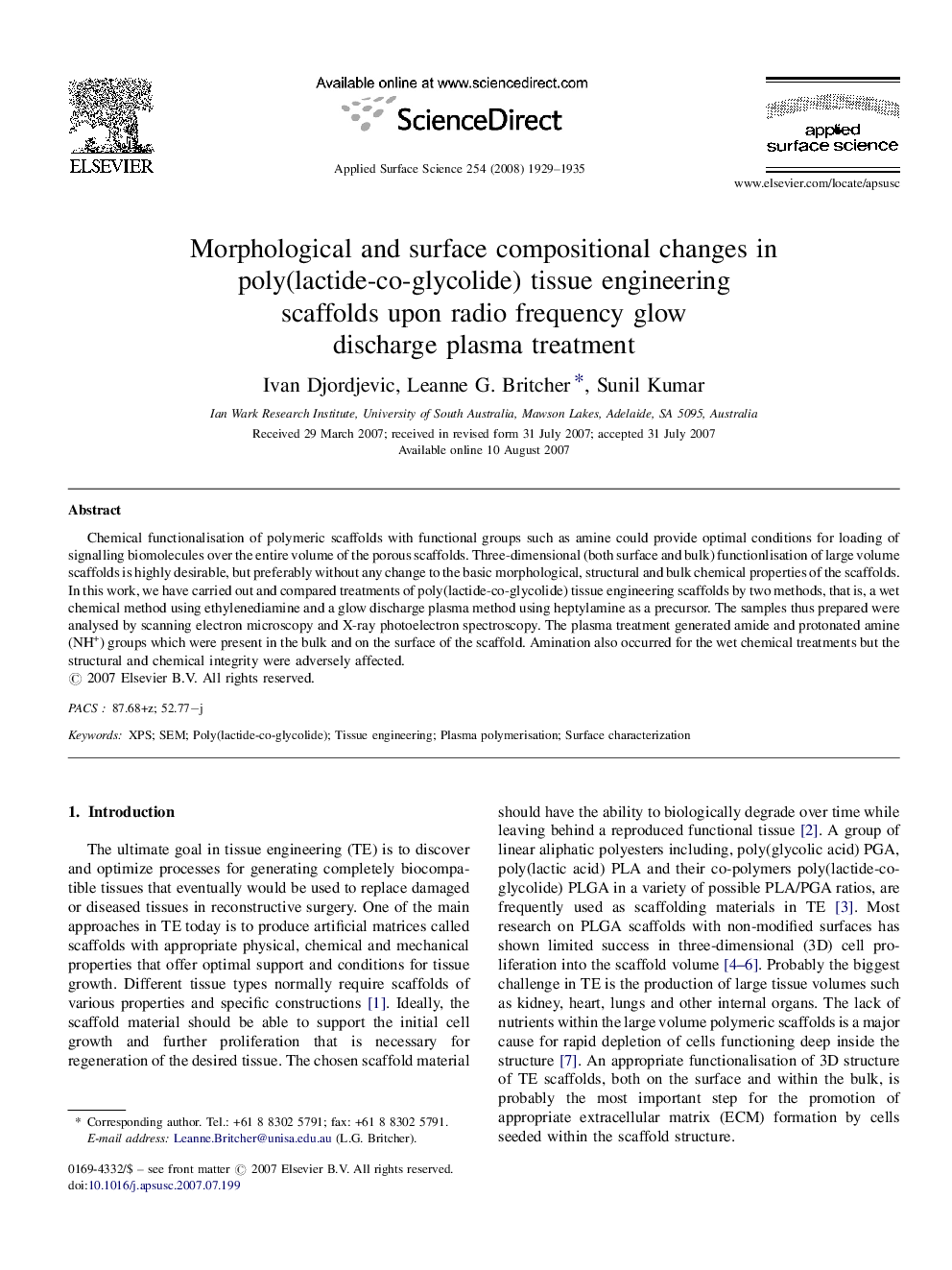| Article ID | Journal | Published Year | Pages | File Type |
|---|---|---|---|---|
| 5366116 | Applied Surface Science | 2008 | 7 Pages |
Chemical functionalisation of polymeric scaffolds with functional groups such as amine could provide optimal conditions for loading of signalling biomolecules over the entire volume of the porous scaffolds. Three-dimensional (both surface and bulk) functionlisation of large volume scaffolds is highly desirable, but preferably without any change to the basic morphological, structural and bulk chemical properties of the scaffolds. In this work, we have carried out and compared treatments of poly(lactide-co-glycolide) tissue engineering scaffolds by two methods, that is, a wet chemical method using ethylenediamine and a glow discharge plasma method using heptylamine as a precursor. The samples thus prepared were analysed by scanning electron microscopy and X-ray photoelectron spectroscopy. The plasma treatment generated amide and protonated amine (NH+) groups which were present in the bulk and on the surface of the scaffold. Amination also occurred for the wet chemical treatments but the structural and chemical integrity were adversely affected.
